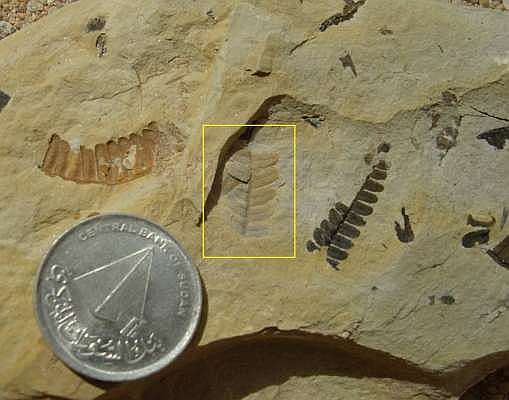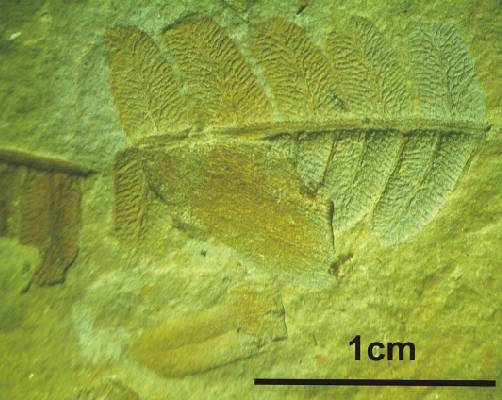|
Carboniferous plant-fossil Paleoweichselia
halfa n.sp.
A new species of the Genus Paleoweichselia POTONIE
& GOTHAN (1909) in North Africa (Sudan/Egypt)
Norbert Brügge, Germany
Dipl.-Geol.
bruegge14643@gmail.com
In 2009 Geologists of the University of Dongola (Sudan) found
in sediments of Wadi Halfa imprints from supposedly to Weichselia associated
plant. Dr. Mutwakil Nafi had sends to the author photos for the determination.
The author found, that the venation of the pinnules is not compatible with
the Cretaceous Weichselia reticulata. The mesh venation is clear imperfect,
similar to Paleoweichselia (defrancei) from the Carboniferous
in the Saarland (Germany). Other forms of Carboniferous flora in parallel
horizons in Wadi Halfa (Rhodea, Calamites, Stigmaria) confirm the age
of the finds.
Based on the findings from the Wadi Halfa, the author has than reviewed all
them available and unpublished photos from the Egyptian Gilf Kebir, and actually
he found some evidence that prove the presence of the same Paleoweichselia
in Carboniferous layers of this region.
The images from the Gilf Kebir plateau are not particulary revealing. The
best images of specimens were found in a "Clayton Crater" south of the
plateau. Unfortunately the venation of the pinnules are in poor condition.
But the reticulate venation is be seen in the approach. Andras Zboray
and Gabor Merkl (Hungary) have made detailed photos.
The genus Paleoweichselia was created in 1909 by POTONIE & GOTHAN. Paleoweichselia
is like Pecopteris in the habitus of pinna and pinnule, and has an irregularly
developed mesh venation. Carboniferous species with a like mesh venation are
known from the genus Linopteris (e.g. obliqua BUNBURY). However,
the pinnule shapes of Linopteris are mostly linguaeform and the mesh
venation is more regularly. With regard to the pinnule shape, Paleoweichselia
is more comparable to Weichselia from the Cretaceous time, which also
has a mesh venation. However, Weichselia has a regularly and close-mesh
structured venation.
So far, there was only one species of Paleoweichselia - Paleoweichselia
defrancei - from the Westfal D in Saarland (Germany). The plant has been
found in a stud of a coal mining.
The author is of the opinion that due to the enormous geographic distance
to the Carboniferous deposits of Saarland as well as differences in shape
and venation of the pinnule, he can create a new (second) species of Paleoweichselia
for the occurrence in North Africa.
Note: In the context
of the announced documentation, will be the confused diagnosis for Paleoweichselia
replaced by a more precise diagnosis, which is oriented only at the new interpreted
pinnule-venation of the holotype of Paleoweichselia defrancei BRGNT.
|

Paleoweichselia halfa n.sp. (Holotypus)
|

Venation of Paleoweichselia halfa n.sp. (Holotypus)
|
|








